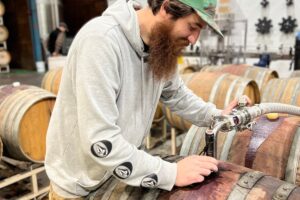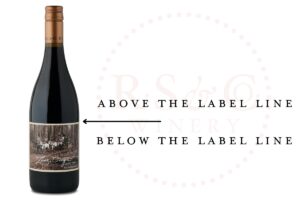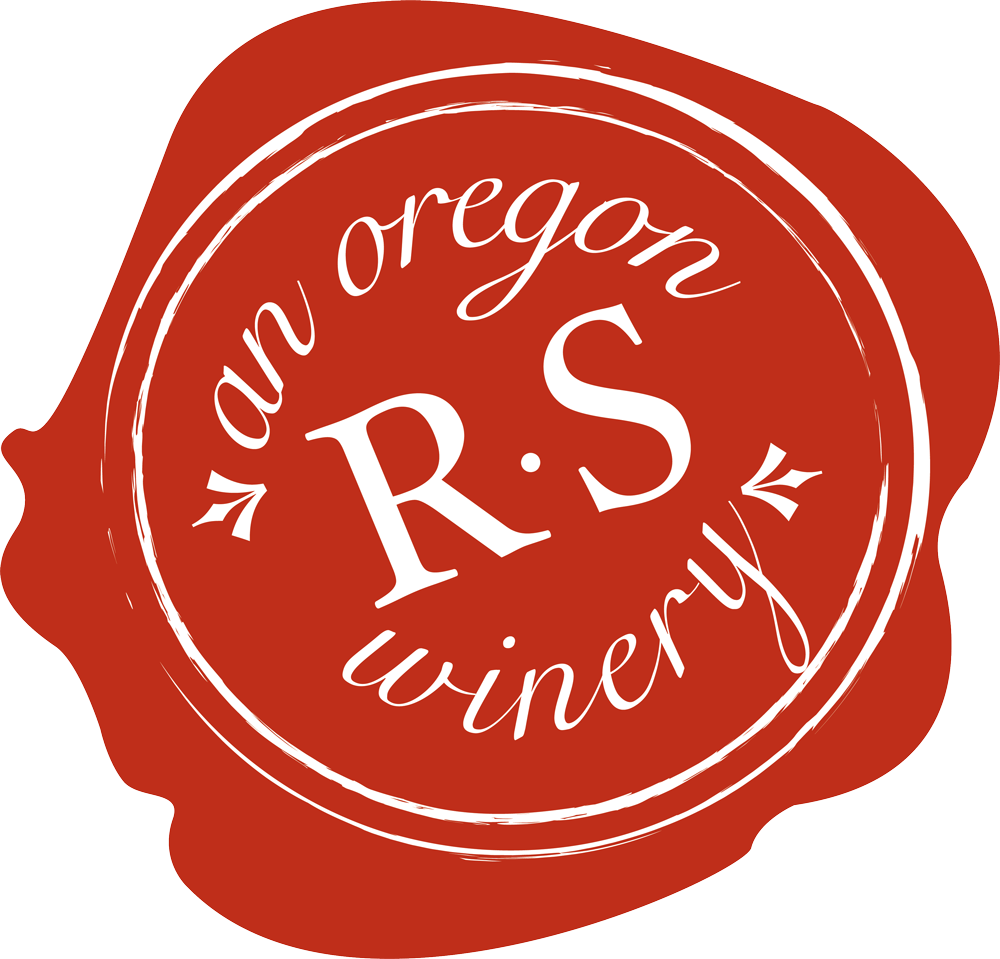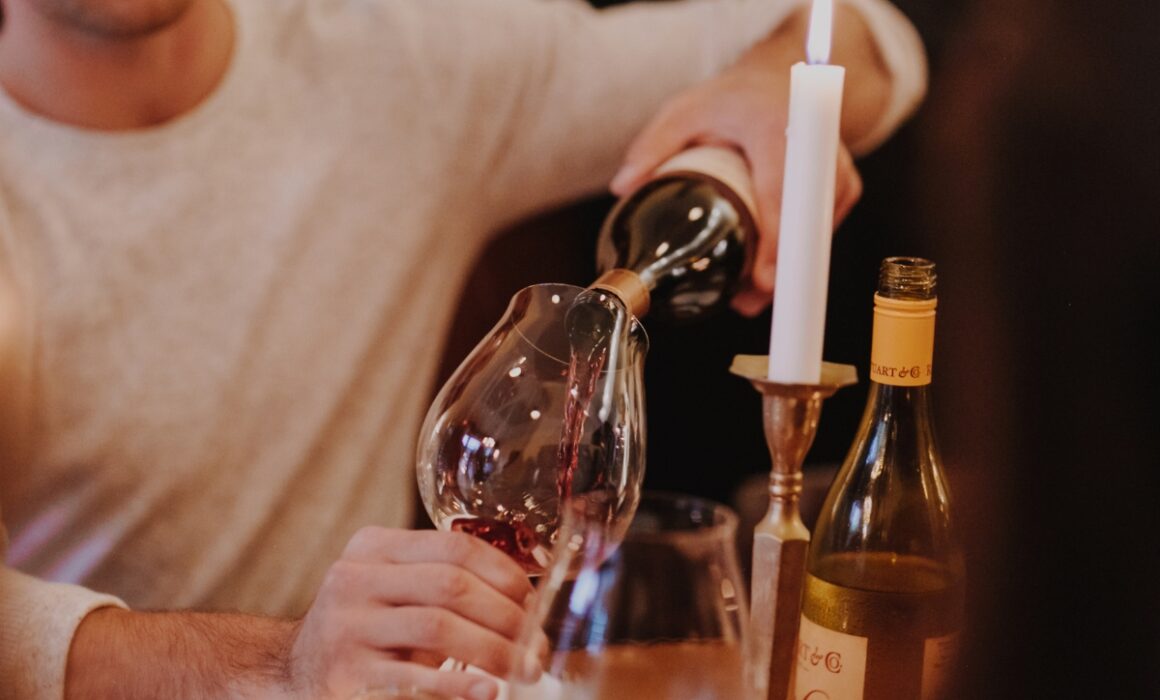An Open Bottle – How Long Until It’s Too Late
The greatest tragedy of a dinner party is the leftover bottle of wine, half-full, and rediscovered two days after the party ended. Whether it was a host/ess gift or a bottle which had been saved to open with friends, we’ve all stared at a bottle on our counter wondering, “Is this wine still okay to drink?”
What Makes a Wine “Go Bad”
Wine “going bad” is inevitable if you’re keeping wine in the bottle. The ultimate enemy of wine – whether the product is in a barrel or bottle – is oxygen. When you hear of cellar teams “topping barrels,” they are adding more wine to a barrel of wine to ensure there is little empty space, avoiding a pocket of oxygen in the barrel.
 Cellar Manager, Nic Gates, holds a flashlight to keep an eye on the wine level as he tops barrels.
Cellar Manager, Nic Gates, holds a flashlight to keep an eye on the wine level as he tops barrels.
Oxygen converts alcohol into acetaldehyde, which turns to acetic acid, and allows for acetic acid bacteria to grow in the wine. A tell-tale sign of acetic acid in wine is a vinegar smell.
Fun fact: If you’ve ever been in a tasting room where a fruit fly has fallen into your glass, and your host whisks it away to give you a fresh pour, it is because the feet of fruit flies carry acetic acid! Long exposure time of the little bug in your wine can elicit the same vinegar smells as oxidation.
What to Look Out For In An Opened Wine
Identifying if a wine has gone bad is a multi-sensory experience. First, look at the wine. A sound wine should be clear and bright in color. So if your wine is cloudy, opaque, or its color is not true to its original state, that’s an indication of the wine spoiling. This could look like a red wine turning orange or a white wine turning brown.
Your nose will be your greatest asset in identifying a spoiled wine. If there are aromatic notes of vinegar (acetic acid), wet cardboard or wet dog, or even nail polish remover, your wine has likely gone past its prime.
Taste may be your ultimate deciding factor in whether you enjoy an opened bottle. If the smell is not so overpowering that it overtakes the fruit profile of the wine, give it a sip! Your palate will know quickly whether it’s worth a full glass. At low levels, acetic acid can add a slightly fruity or sharp character. It is at the high levels where it becomes vinegary, sharp, or even bitter in taste. While it may not be a tasty mouthful, it will undoubtedly be a defining one.
How Long a Bottle Can Stay Open
Generally speaking, if a wine is stored properly, it can last between 1-5 days. For reds, whites, and rosés, 3-5 days is a suggested timeline, whereas sparkling wines are limited to 1-3 days. The quick tips to keep a bottle fresh include putting the original cork/screwcap back on and storing the bottle in a cool, dark place. Both red and white wines can benefit from being in the fridge to increase their longevity.
- Red wines with higher tannins (like our 3 Clowns Cabernet Sauvignon) tend to last longer than those with a lower tanning profile, such as Pinot noir.
- When it comes to white wines, drier wines (those with low sugar content) last longer than sweeter wines. Our Big Fire Pinot Gris is a dry-style wine which has a great in-the-fridge shelf life due to its minimal residual sugar.
- Sparkling wine quality diminishes as the carbonation lessens, and should be enjoyed sooner than later.
- Additionally, wines with higher alcohol levels – such as port style wines – last much longer, as the alcohol level is so high that it kills any potential bacteria. Our NV Tawny Dessert Wine and Colheita can be re-corked and left on the counter until the bottle is finished due to their ABV being roughly 19%.
R. Stu’s Guidelines for Open Bottles
In the R. Stuart & Co. Tasting Room, our team evaluates wines at the end and beginning of every business day to ensure only the highest quality wines reach your glass. After the initial opening of a bottle, here are the rules of thumb our team follows for both red and white wines:
- If the wine level is above the top of the label, the bottle stays as is and the quality is checked the next day. These wines are generally very safe and quality the next day, as the oxygen exposure is limited.
- If the wine level is below the top of the label, there is limited window to enjoy as there is more oxygen than wine in the bottle. If the bottle’s volume is very low at the end of the day, our team will likely dump the remains of the bottle. Whereas if the level is right around the top of the label, the bottle will be saved until the next business day, where a team member will check it for quality.
- For sparkling wines, we do keep the “label rule” in mind, but will typically open a fresh bottle each day to ensure quality effervescence and flavors.

In Conclusion
There are some fanciful tools in the market designed to increase the life of your wine, such as a Coravin or vacuum pumps. Our team likes to use these tools when the bottle is older or precious, and we want to expand the time frame in which we can enjoy the wine due to its rare nature. When the R. Stu Crew opens a library bottle, we will drink it on the day of opening, as well as the next day for a comparison of profiles. We like to see how the wine changes (for better or for worse), and make note of the vintage, varietal, and storage practices that may have impacted the overall quality.
Ultimately, your palate and nose are your greatest tools in determining a wine’s quality. So get out there and sip, sniff, and savor your favorite bottles! Know that there are small practices you can employ to increase the life of your wines so you can enjoy them until the last drop.
Cheers!


